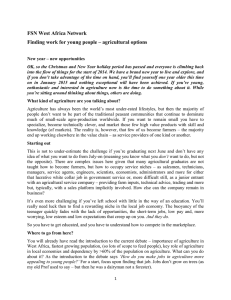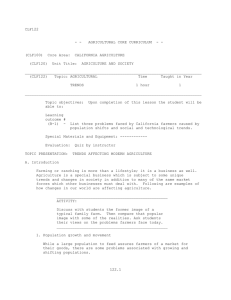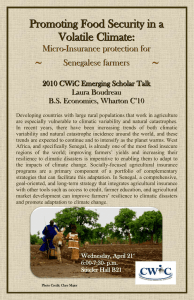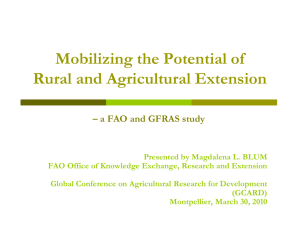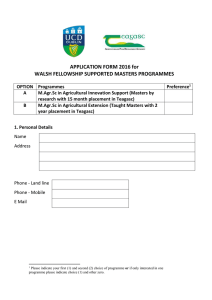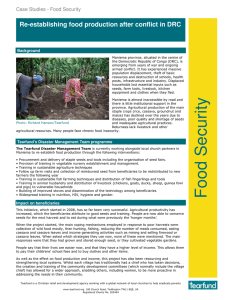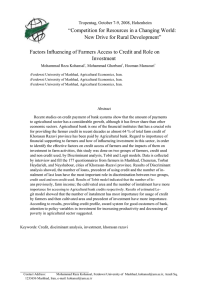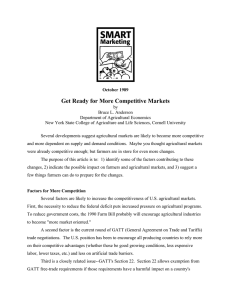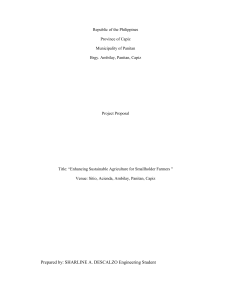Tearfund Disaster Management Key Learning Food Security
advertisement
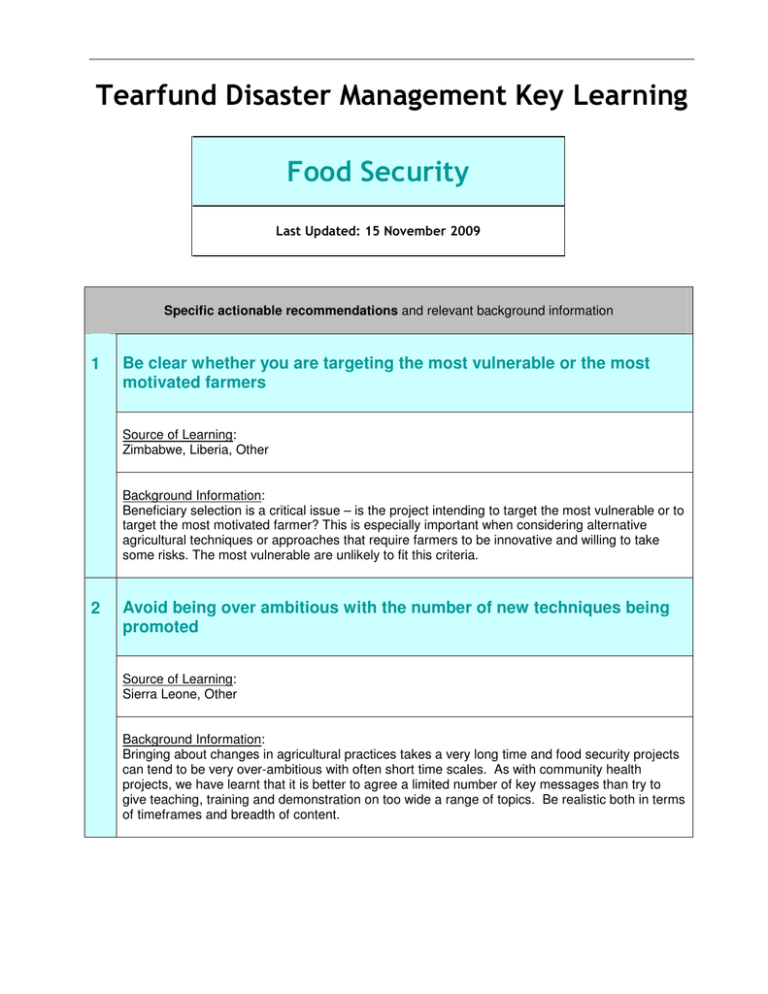
Tearfund Disaster Management Key Learning Food Security Last Updated: 15 November 2009 Specific actionable recommendations and relevant background information 1 Be clear whether you are targeting the most vulnerable or the most motivated farmers Source of Learning: Zimbabwe, Liberia, Other Background Information: Beneficiary selection is a critical issue – is the project intending to target the most vulnerable or to target the most motivated farmer? This is especially important when considering alternative agricultural techniques or approaches that require farmers to be innovative and willing to take some risks. The most vulnerable are unlikely to fit this criteria. 2 Avoid being over ambitious with the number of new techniques being promoted Source of Learning: Sierra Leone, Other Background Information: Bringing about changes in agricultural practices takes a very long time and food security projects can tend to be very over-ambitious with often short time scales. As with community health projects, we have learnt that it is better to agree a limited number of key messages than try to give teaching, training and demonstration on too wide a range of topics. Be realistic both in terms of timeframes and breadth of content. 3 Agricultural inputs (seeds and tools) must be selected and approved by the end users Source of Learning: South Sudan, Other Background Information: There have been negative project experiences where project staff and experts made decisions on seed type with inadequate consultation with the farmers. This is especially important when new seed types are being considered for distribution. 4 Be clear on the overall purpose of agricultural input distribution - is it to improve food security levels or to encourage diversification and sustainability? Source of Learning: Malawi, Other Background Information: Projects in the past have sometimes been confused between the two. In some cases, the focus on improved food security may rely on distributing seeds which are traditionally grown and relied upon, even though the monoculture reliance is part of the reason why the area is food insecure to begin with. 5 Be realistic when considering repayment schemes for agricultural input distribution Source of Learning: Ethiopia, Other Background Information: Consider the management requirements which will be involved, what procedures are expected if recipients fail to repay the required quantities and always seek to build on traditional loan systems wherever possible, rather than impose a new system for the sake of the project. 6 Make sure you know the local seasonal calendar before you start Source of Learning: Various Background Information: There are different calendars for different districts and communities that function differently, so it is a good idea to map these differences. Use the seasonal calendar to make your procurement plan e.g. provide seeds one month before planting, ask the farmers when they need it. 7 Build on existing structures and local knowledge Source of Learning: Various Background Information: Look at what was there before and try to restore niche markets or build back better. Immediately after a disaster existing structures should be used as these will often work better than introducing new structures such as micro-finance. Encourage the community to come together in groups of common interest such as a particular activity (e.g. fishing or planting) or a specific geographic location. Have tools welded by locals even if more expensive. 8 Grow new crops in areas of increased visibility Source of Learning: Various Background Information: Grow new or demonstration crops in places with high visibility, such as near a water pump. In a camp setting consider growing vegetables in sacks of manure as a good demonstration.

